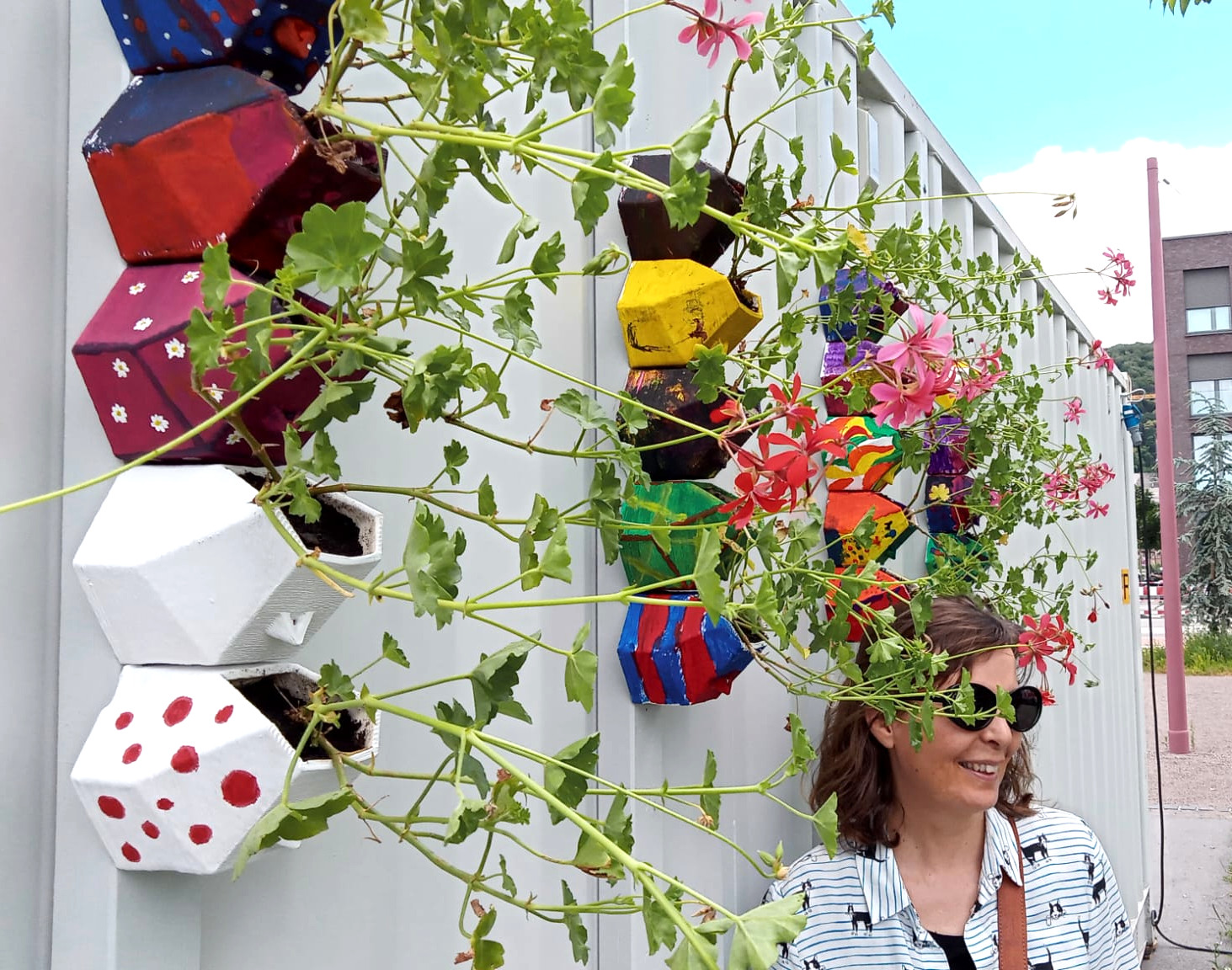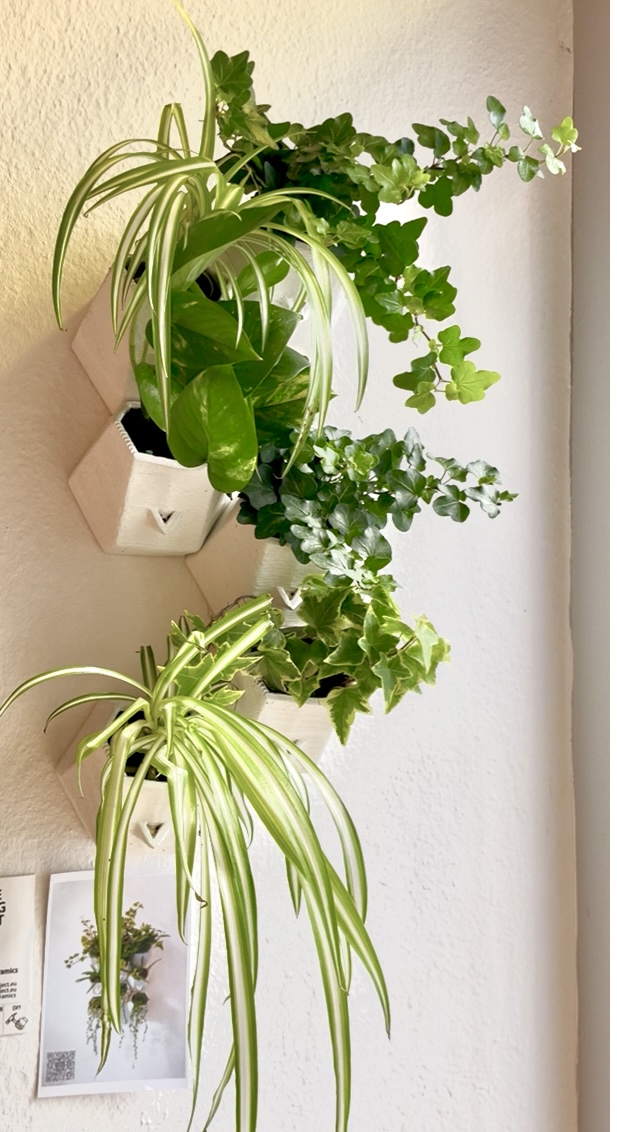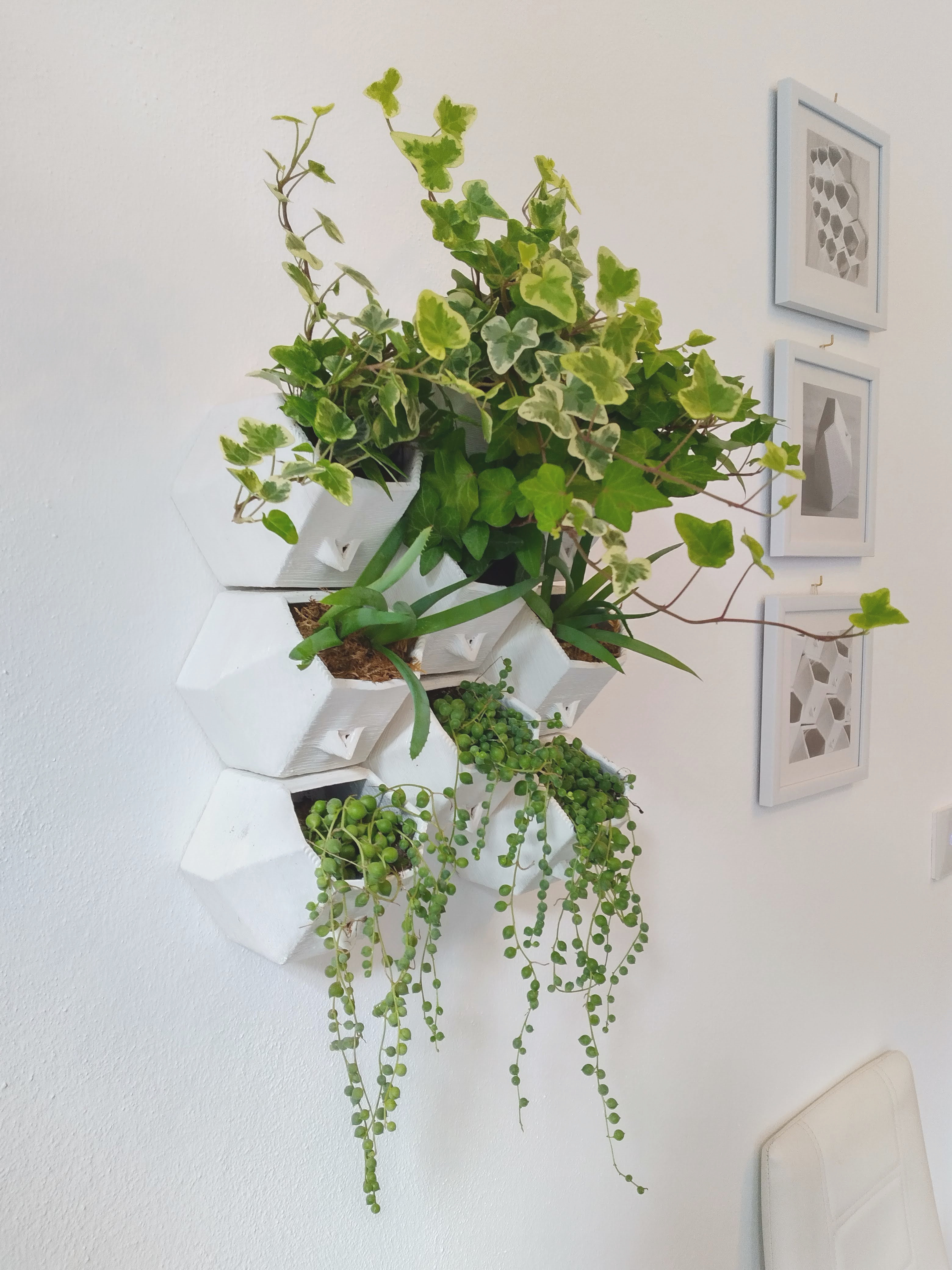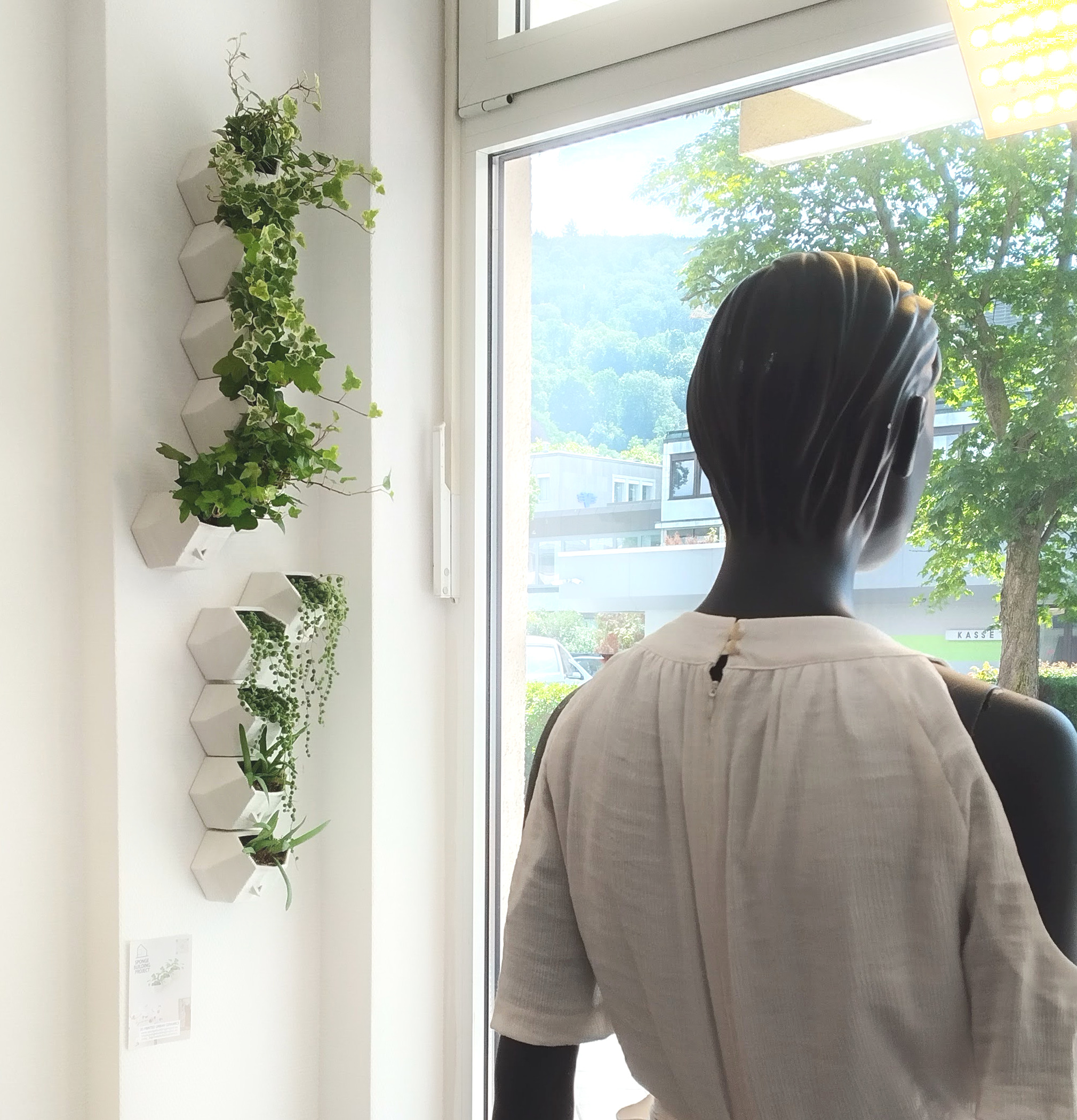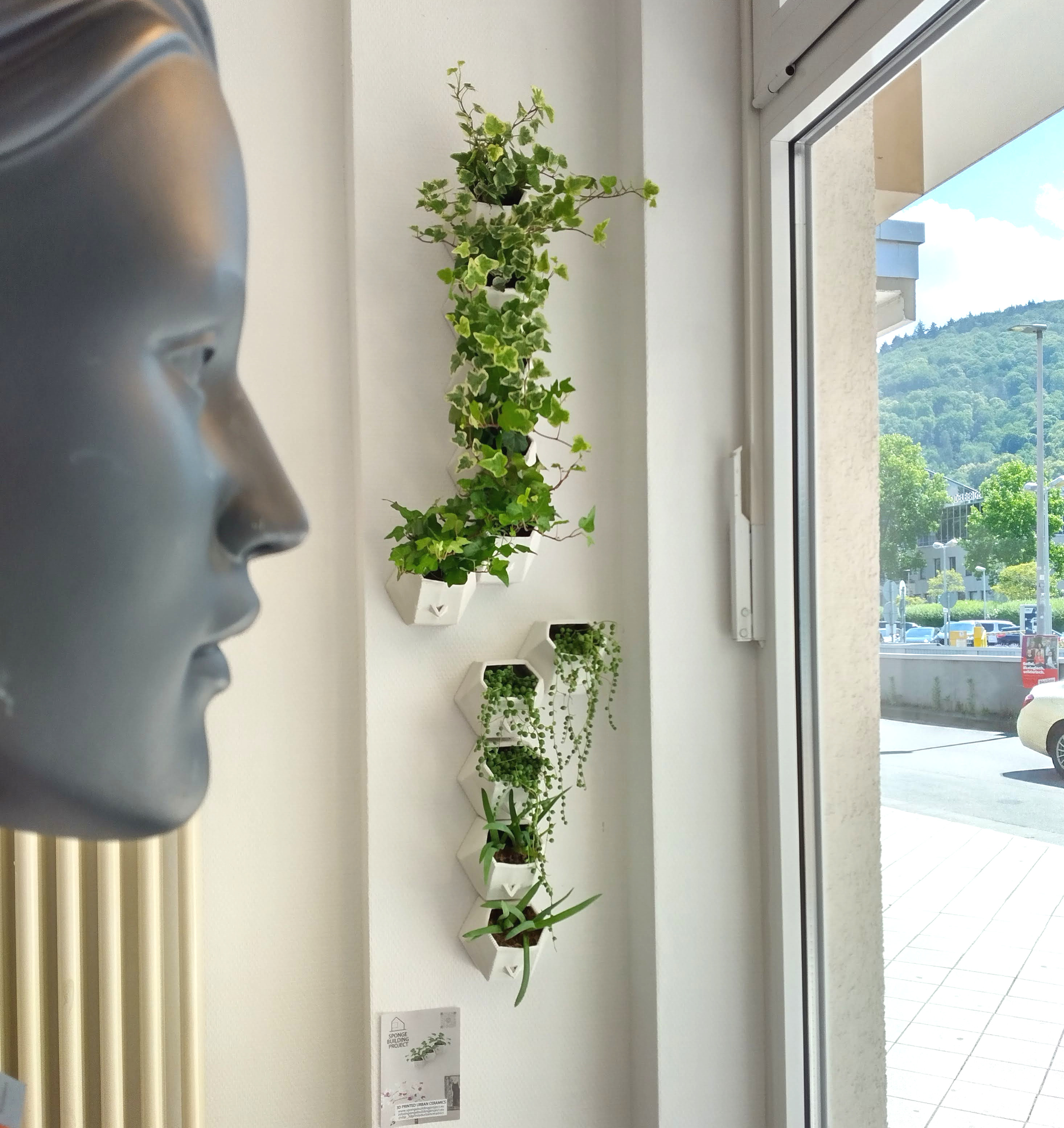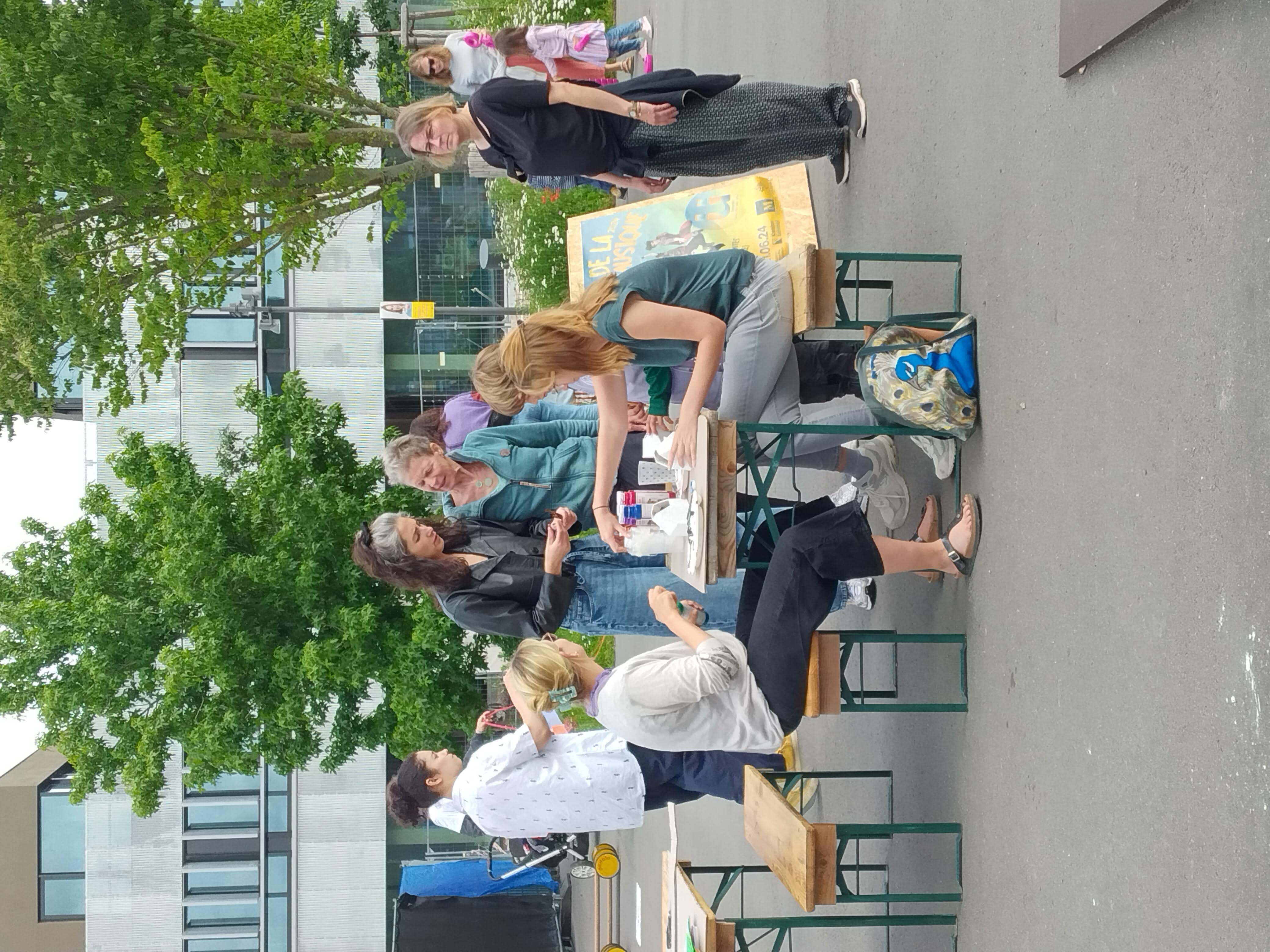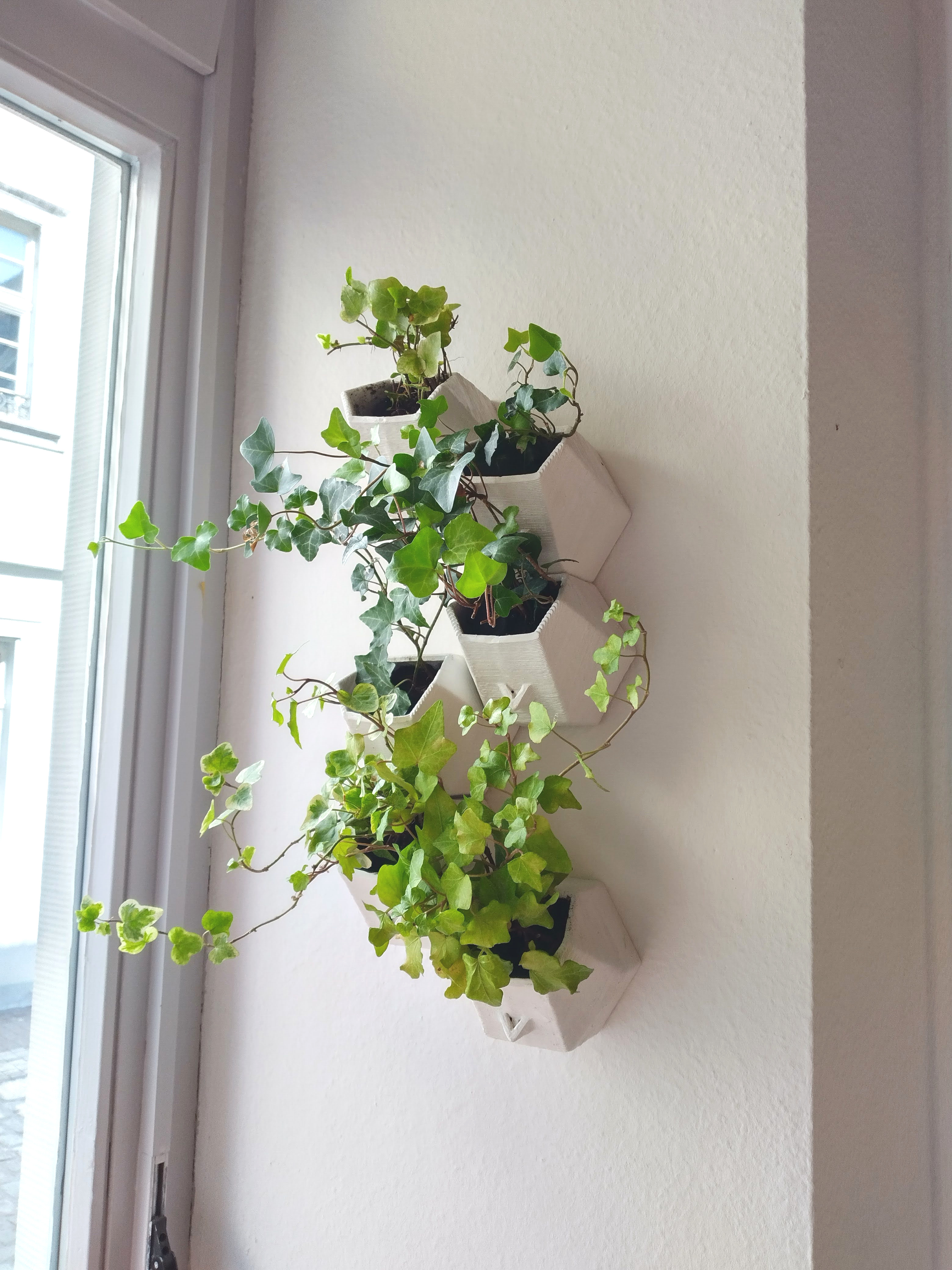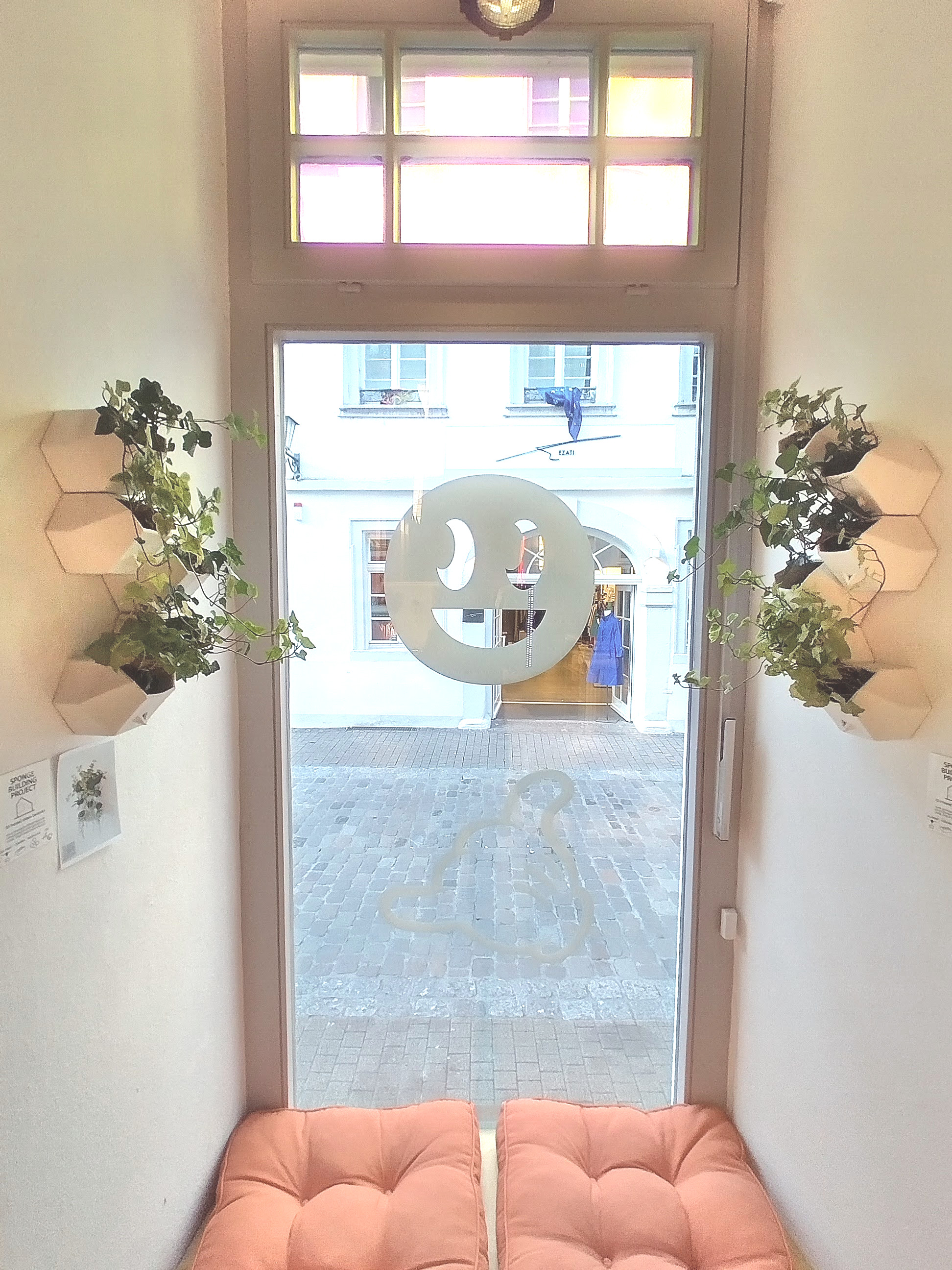Reconnecting with nature
Shape it Green
Sponge Building Project: Shape it Green – 3D-Printed Ceramics for DIY Healthy Environments
Shape it Green transforms urban environments into vibrant and healthy spaces with innovative 3D-printed ceramic solutions. Our interlocking SBP Bricks, dynamic Green Walls, and Moos Tyle designs create vibrant, cement-free facades that collect rainwater and provide thermal and acoustic insulation—all in a DIY-friendly system that reconnects cities with nature for healthier living environments.
Germany
Local
Heidelberg
Mainly urban
It refers to other types of transformations (soft investment)
Yes
2024-12-31
No
No
No
As an individual
Our project, under the "Reconnecting with Nature" category, aims to empower communities to create their own green spaces through innovative, DIY-friendly solutions. In our pilot project in Heidelberg last year, we introduced the Green Wall product—a modular system crafted from 3D-printed ceramics. The initiative was implemented across various settings, including an outdoor workshop titled "Make Your Own Green Wall" in collaboration with the Karsltor Bahnhof Cultural Center, which engaged both adults and children, as well as two indoor installations in local concept stores and galleries showcasing work by local artists and handcrafters. This multifaceted approach targeted urban dwellers, families, creative professionals, and cultural communities, emphasizing sustainability and resilience in design.
The specific objectives were to demonstrate the versatility of our modular green wall system and to provide an accessible tool for transforming urban environments into healthier, nature-infused spaces. The outcomes exceeded expectations: participants provided overwhelmingly positive feedback, and the installations highlighted the system’s resilience and adaptability. Building on this success, future projects are being planned in partnership with various organizations to trial additional designs such as the Green Tyle and SBP Brick, further advancing our mission to shape urban environments into thriving, green communities.
The specific objectives were to demonstrate the versatility of our modular green wall system and to provide an accessible tool for transforming urban environments into healthier, nature-infused spaces. The outcomes exceeded expectations: participants provided overwhelmingly positive feedback, and the installations highlighted the system’s resilience and adaptability. Building on this success, future projects are being planned in partnership with various organizations to trial additional designs such as the Green Tyle and SBP Brick, further advancing our mission to shape urban environments into thriving, green communities.
Urban Greening
3D Printing Ceramics
Sustainability
Modularity
DIY
In Heidelberg last year, our Green Wall module project was designed to advance sustainability in urban settings. Its primary objectives were to reduce environmental impact and enhance urban microclimates using eco-friendly, modular design. The system is constructed from 3D-printed ceramic components that are easy to attach to the wall without cement, thereby lowering embodied energy and minimizing construction waste. The dual-chamber design facilitates effective rainwater collection and retention, reducing urban runoff and contributing to natural cooling. Additionally, the ceramic material provides natural thermal and acoustic insulation, improving energy efficiency in built environments. The pilot project demonstrated these sustainability benefits through improved local air quality, moderated indoor temperatures, and positive feedback from participants, positioning the project as an exemplary model for sustainable urban greening that can be scaled and replicated in other cities.
Our Green Wall module in Heidelberg last year was aimed at transforming urban spaces into visually compelling, nature-infused environments that enhance everyday experience. The project’s objectives centered on blending cutting-edge design with cultural enrichment. Utilizing interlocking 3D-printed ceramic elements, the installation creates a sleek, cement-free façade that is both modern and organically vibrant. Public workshops and installations in cultural venues, galleries, and concept stores enabled residents to engage directly with the design process. Participants experienced firsthand the tactile quality and resilience of the structure, while local artists and cultural partners praised its aesthetic appeal and adaptability. This immersive experience not only beautified public spaces but also fostered a sense of community and pride, proving that innovative design can significantly elevate urban quality of life and serve as an inspiring example for future projects.
This project was rooted in inclusive design, ensuring accessibility and affordability for everyone. Our objective was to democratize sustainable urban greening by making the process approachable for all community members. The modular, DIY-friendly nature of the system—crafted from 3D-printed ceramics and designed for easy assembly—allowed participants of all ages and backgrounds to engage in building their own green spaces. Through interactive workshops, such as the “Make Your Own Green Wall” event held with local cultural partners, we involved families, local artisans, and diverse community groups in both the design and installation processes. This hands-on approach not only imparted valuable skills but also fostered a shared sense of ownership over urban transformation. The project’s affordability and simplicity have proven its potential to serve as a replicable model for inclusive, community-led urban greening initiatives.
In Heidelberg, this project actively involved citizens and civil society from conception to implementation. We organized interactive workshops, including the “Make Your Own Green Wall” event in collaboration with the Karsltor Bahnhof Cultural Center, inviting residents to contribute to both design decisions and the physical construction process. This participatory approach ensured that local voices were integral to the project’s evolution, aligning with the New European Bauhaus principles of sustainability, aesthetics, and inclusion. Citizens not only provided feedback but also helped shape the final installation, resulting in a project that resonated with the community’s cultural identity and environmental aspirations. Their involvement enriched the design process, increased public ownership, and ultimately led to a more impactful and locally relevant urban intervention. The success of this engagement model illustrates how deep community involvement can drive innovation and foster long-term sustainability in urban projects.
The Shape it Green project in Heidelberg was the result of extensive stakeholder engagement at local, regional, and national levels. Locally, collaboration with cultural centers, community groups, and local businesses was pivotal. Partners such as the Karsltor Bahnhof Cultural Center co-organized public workshops and hosted installations, ensuring active community involvement. At the regional and national levels, urban planners, sustainability experts, and municipal authorities provided technical advice and strategic support, helping to refine the design and execution processes. This multi-level collaboration enriched the project by incorporating diverse perspectives, which improved both the technical and cultural aspects of the installation. The added value of these engagements was seen in the project’s seamless integration into the urban fabric, high public acceptance, and its replicable model for future urban greening initiatives that address both environmental and social objectives.
In this project, I served as both the architect and urban health consultant, leading the design and 3D printing of the ceramic modules. The firing process was conducted in a local ceramics community, where I received invaluable guidance from experienced local ceramists. Their expertise ensured the modules met high standards of durability and aesthetic quality. For urban implementation, I collaborated closely with the town hall's cultural department and engaged with local associations and cultural organizations. This collaboration facilitated seamless integration of the Green Wall installations into Heidelberg's urban landscape, ensuring they resonated with the community's cultural and environmental aspirations. This multidisciplinary approach, combining architectural innovation, traditional craftsmanship, and municipal support, exemplifies how diverse expertise can converge to create sustainable and culturally enriching urban interventions.
The Heidelberg Green Wall project broke new ground by rethinking traditional urban greening practices. Unlike conventional green wall installations that rely on cement-based structures and static designs, our project utilized interlocking 3D-printed ceramic modules to enable cement-free construction. This innovative approach simplifies assembly and reduces environmental impact by lowering material consumption. The design offers multiple configurations for plant growth, insulation, and rainwater management, addressing urban challenges such as energy efficiency, thermal regulation, and water runoff. The DIY nature of the system democratizes urban greening, empowering citizens to actively participate in transforming their environments. By combining advanced manufacturing techniques with community-centric design, the project sets a new standard for sustainable, flexible, and aesthetically driven urban interventions, making it an exemplary model for future innovation in the field.
The methodology of this project was grounded in innovative design, community participation, and agile development. Starting with a pilot phase, we deployed the modular Green Wall system in various local contexts, including indoor galleries, concept stores, and outdoor public spaces. We organized hands-on workshops—most notably the “Make Your Own Green Wall” event—to involve citizens directly in the installation process. Feedback gathered during these workshops informed continuous improvements in design and functionality. Our approach emphasized transparency, adaptability, and sustainability, with each stage incorporating insights from both technical experts and community participants. This iterative, user-centered methodology not only ensured the product’s technical excellence but also maximized its cultural resonance and usability. The success of the pilot has provided a replicable model that can be adapted to diverse urban environments, demonstrating the value of integrating technical innovation with participatory design practices.
This project was intentionally designed for high transferability and replicability. Its modular design—based on interlocking 3D-printed ceramic components—allows for easy adaptation across different urban settings, climates, and cultural contexts. The DIY-friendly system and cement-free, dry-wall construction methodology reduce installation costs and complexity, making it accessible to a wide range of communities. The participatory approach, proven effective in Heidelberg through public workshops and community installations, provides a replicable framework for engaging stakeholders and tailoring projects to local needs. Key technical and design elements for water management and insulation, address universal urban challenges like energy efficiency and stormwater control. These features, combined with the iterative, community-focused methodology, ensure that the Green Wall concept can be successfully implemented in other cities, offering a scalable solution to urban sustainability and greening.
The project tackled several global challenges by providing practical, local solutions. At its core, the Green Wall module addresses climate change and urban environmental degradation. The use of sustainable 3D-printed ceramics and the innovative interlocking design reduce material waste and energy consumption. The system’s design offers natural thermal insulation and effective rainwater management, which helps mitigate urban heat island effects and reduce stormwater runoff. By transforming neglected urban walls into living, green facades, the project improves air quality and promotes biodiversity in densely built environments. Furthermore, by empowering local communities through DIY workshops and participatory design, the project fosters social cohesion and environmental awareness. These local interventions not only enhance the quality of urban life but also serve as a replicable blueprint for addressing global urban sustainability challenges through innovative, community-driven design.
The pilot project in Heidelberg achieved significant results across multiple dimensions. Deployed in both indoor and outdoor settings—including cultural venues, concept stores, and public workshops—the installations were met with high acclaim from local residents, artists, and stakeholders. Participants praised the system’s durability, aesthetic appeal, and functionality, particularly noting the benefits of cement-free, dry-wall construction and effective rainwater retention. Quantitative observations indicated improved thermal comfort and energy efficiency in test areas, while qualitative feedback highlighted increased community engagement and a renewed interest in sustainable urban design. The project successfully demonstrated that innovative, DIY-friendly solutions can transform urban spaces into healthier, more resilient environments. These outcomes provide a strong foundation for scaling the project and serve as a replicable model for future initiatives aiming to enhance urban quality of life through sustainable, community-centric design.

